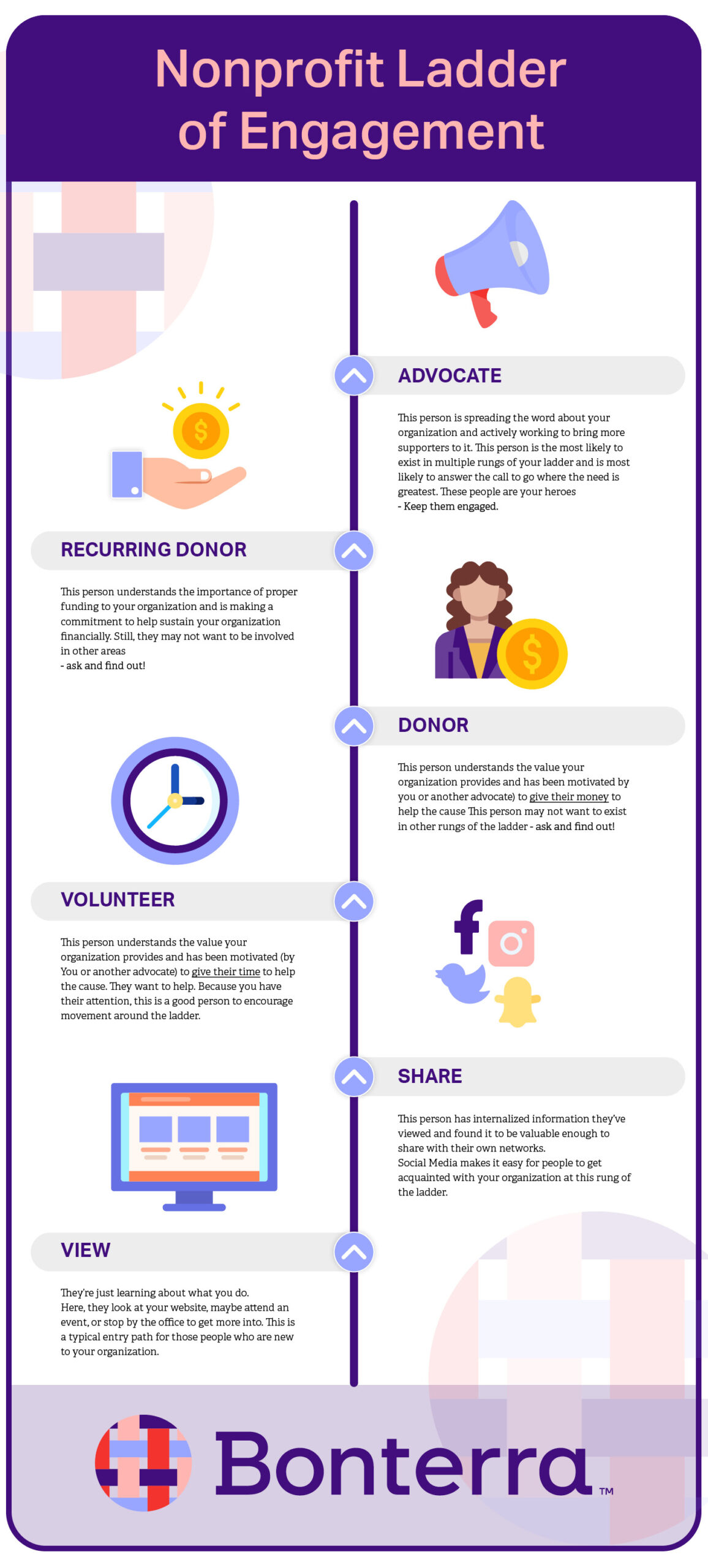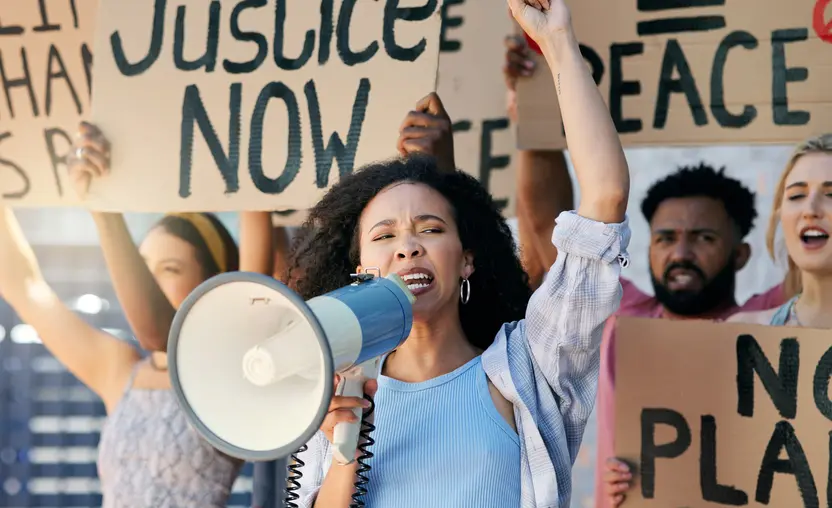In the past, a nonprofit organization could succeed without a website by launching a direct mail campaign, relying on walk-in traffic, and hosting a few fundraising events throughout the year. As technology use expands, however, nonprofits have to rely more heavily on virtual outreach to engage their supporters.
Because nonprofits are competing for a limited pool of attention online, you need to find innovative ways to keep your audience engaged and committed to your cause. The nonprofit ladder of engagement is a critical tool for finding and retaining loyal supporters. In this guide, we’ll explore how your nonprofit organization can use this tool to engage your audience.
What is the nonprofit ladder of engagement?
A ladder of engagement is a term used to describe the levels of interest and participation among a group of people. The ladder has multiple rungs, with the lowest rung representing the lowest level of interest, or someone who knows very little about your organization’s purpose. The highest rung represents a more active level of participation and engagement with your cause.
One of the most important parts of communicating effectively with a supporter is understanding their relationship with your nonprofit. Using a ladder of engagement can help you visualize that relationship.
How does the ladder of engagement work?
Supporters can enter the nonprofit ladder of engagement in a variety of ways, from following your social media accounts to signing a petition.

To explore how supporters enter and move up the ladder of engagement, let’s look at an example. Let’s say you work in a health-based issue advocacy organization working to influence Congress and obtain research funding. In this scenario, your supporters’ journey up the ladder of engagement will look like this:
- Step 1: At the lowest rung, supporters complete an easy action such as looking at your organization’s website.
- Step 2: Supporters share the valuable information they’ve learned about the health issue you advocate for with their social network.
- Step 3: Supporters regularly participate in fundraisers and volunteer opportunities with your organization.
- Step 4: Supporters make a donation to your cause to support your advocacy efforts.
- Step 5: Supporters see that funding helps victims of these health issues and begin making recurring donations.
- Step 6: At the highest level of engagement, supporters agree to join the organization on a trip to Washington D.C. to advocate in person.
Keep in mind that, with more virtual communication, it’s possible for your audience to enter the ladder at different stages. Because social media and your website can create nearly instant, high levels of familiarity with your organization, supporters can move from the lowest rungs to the highest before you even have a conversation with them.
How can you motivate donors to move up the ladder?
No matter which level of the ladder of engagement your supporters enter through, one of your nonprofit organization’s primary goals should be to encourage them to move up the ladder. Because donors at the top of the ladder will be the most engaged with your cause (and contribute the most to furthering your purpose), prioritize moving supporters to that top rung.
Create nonprofit audience personas
A nonprofit audience persona is a profile of that organization’s ideal supporter. It is a collection of the traits and characteristics of a person most likely to interact with your nonprofit. These personas give you a deeper understanding of your audience, what motivates them, and what they want to get out of their relationship. By knowing your audience, you can more effectively encourage them to engage with your organization.
To create a persona, focus on your supporters’ motivations. Why would someone want to get involved with your organization? If they did, what would they learn? Describe who that person is, what they look like, and what they care about. Give this fictional person a name to make it more concrete.
For an organization focused on climate change legislation, an audience persona might look like this:
“Climate Carrie” is in her 20s. She cares deeply about the environment and about protecting natural resources. She understands the threat climate change will pose in her lifetime and gets involved with local groups focused on recycling and composting efforts. While she doesn’t have much disposable income, she’s passionate about the cause and volunteers her time when she can.
After creating an audience persona, the next step is to use that information to increase engagement by adjusting your fundraising strategy or marketing efforts based on what the persona reveals about your audience. With this information, you can start thinking about how supporters might enter the nonprofit ladder of engagement and how to encourage them to move up.
Create organizational goals
What does success mean to your organization? Spend some time thinking about the individual goals that will help you further your overall purpose.
For example, one of these goals could be changing a law or passing an important piece of legislation. To achieve this goal, you’ll need informed volunteers willing to spend time writing to elected officials and marching in rallies. This means you’ll need to focus on moving supporters to the higher rungs of the ladder, like becoming an advocate.
Organizational goals and audience personas work hand in hand. As your goals change, your personas should change with them so you are attracting and engaging with people who are the most suited to your cause.
Stay realistic
Motivating supporters to climb the rungs of the ladder of engagement should be a priority for your organization. But moving all donors to the highest level of engagement isn’t a realistic goal. Not all donors are willing or able to remain at the top rung of the ladder, and that’s okay.
As more organizations compete for their attention, it’s inevitable that some supporters who enter the ladder won’t change rungs at all. These supporters may not have the time to get more involved or are happy with the level of engagement they share with your organization. Acknowledge these supporters’ contributions, and find ways you can continue to engage them even at their lower participation level.
Shape your own nonprofit ladder of engagement, then make it easy for supporters to move up to the next rung by prompting them to boost their involvement. Reach out to them with specific calls to action, such as asking them to sign up for emails, make a donation, volunteer, or participate in an advocacy campaign.
Remember that if someone is supporting your organization, they should be considered a valuable part of the community no matter if they are at the top or bottom of the ladder of engagement.




